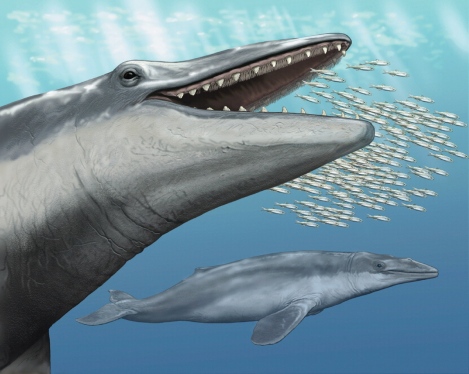
As I've said before, I don't know why I ended up continually discussing evolution in this venue. But it's fun so I'll continue.
One of the interesting problems in evolution is capturing the change from one species to another. We are in the position of viewing a living organism as a complete picture. In actuality, what we see is the sum of all of the selection brought to bear on the ancestors of that living organism. To use the photograph metaphor, we think we're seeing a picture. What we're actually seeing is a series of transparent overlays, some of which add components, some of which change form, some of which remove components, but that the sum result is the organism before us.
A living organism is the reflection of its heritage.
It's also important to remember that each of those overlay images was itself the sum of successful ancestral selections. This means that when we look at an ancestor of an organism, we have to presume it was just as fitted to its environment as the descendant is now.
Which brings us to whales.
Whales (order Cetacea) are taxonomically divided into two groups: Mysticeti, the baleen whales, and Odontoceti, the toothed whales. I talked about a toothed whale monster a few weeks ago. (See here.) This time I'm going to talk baleen whales.
A go
 od cladogram of the Cetaceans is shown here. (Article link here.) This particular cladogram shows the relationships between the different groups based on vestibular evidence. Both groups ultimately derived from Artiodactyla-- sheep, goats and the like.
od cladogram of the Cetaceans is shown here. (Article link here.) This particular cladogram shows the relationships between the different groups based on vestibular evidence. Both groups ultimately derived from Artiodactyla-- sheep, goats and the like. A cladogram of the members of Cetaceans themselves shows the division between the Odontoceti and Mysticeti is shown here.
A cladogram of the members of Cetaceans themselves shows the division between the Odontoceti and Mysticeti is shown here.All of the toothed whales are presumed to have evolved after the split from Mysticeti since, after all, they have teeth, as did their ancestral Artiodactylans. Baleen whales have embryonic tooth buds but they degrade early in development.
A transitional form would have some sort of recognizable tooth as well as some sort of recognizable baleen.
Thomas Deméré and his colleagues found such a transitional form about two years ago: Aetiocetus. (Wikipedia entry here. Original article here.) Aetiocetus definitely has teeth. It also has a fringe of baleen on the upper jaw. Consequently, it is a lovely transitional form.
The nature of the transitional form informs us of a number of things.
First, the transitional form is, itself, recognizably a whale. This shows definitively that the derivation of the baleen whale happened after whales moved from land to sea and were fully adapted as toothed whales. We could likely presume that from other evidence but this fossil drives the nail in the coffin.
Second, Deméré also examined the DNA sequences of fetal Mysticete tooth buds and found that the teeth had dentin but lacked enamel. Presuming that baleen whales derived from toothed whales that had both dentin and enamel, they went looking for inactivated genes for enamel. They found such inactivated genes.
It's as nice a piece of evolutionary science as I've ever seen.
Deméré's article was brought to me by this reference.



No comments:
Post a Comment